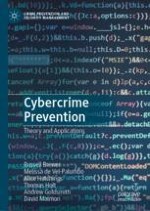2019 | OriginalPaper | Buchkapitel
7. Positive Diversions
verfasst von : Russell Brewer, Melissa de Vel-Palumbo, Alice Hutchings, Thomas Holt, Andrew Goldsmith, David Maimon
Erschienen in: Cybercrime Prevention
Aktivieren Sie unsere intelligente Suche, um passende Fachinhalte oder Patente zu finden.
Wählen Sie Textabschnitte aus um mit Künstlicher Intelligenz passenden Patente zu finden. powered by
Markieren Sie Textabschnitte, um KI-gestützt weitere passende Inhalte zu finden. powered by
